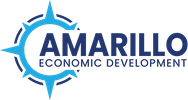“[West Texas A&M University’s] mission is to give students a global perspective, a broader way of thinking. We try to do that in engineering as well. We try to show them that it is not just about a job or getting out to make money; it is about being the leaders technically for our region.” Dr. Emily Hunt, Professor of Mechanical Engineering at West Texas A&M University
Dr. Emily Hunt is the Dean and Professor of Mechanical Engineering at WTAMU. A Canyon native, she earned her B.S., M.S., and Ph.D. degrees in mechanical engineering from Texas Tech University. As a renowned engineer, researcher and author, Dr. Hunt is not only helping pave the way for female engineers in a male-dominated field, but is also positioning WT’s engineering programs competitive on a national scale.
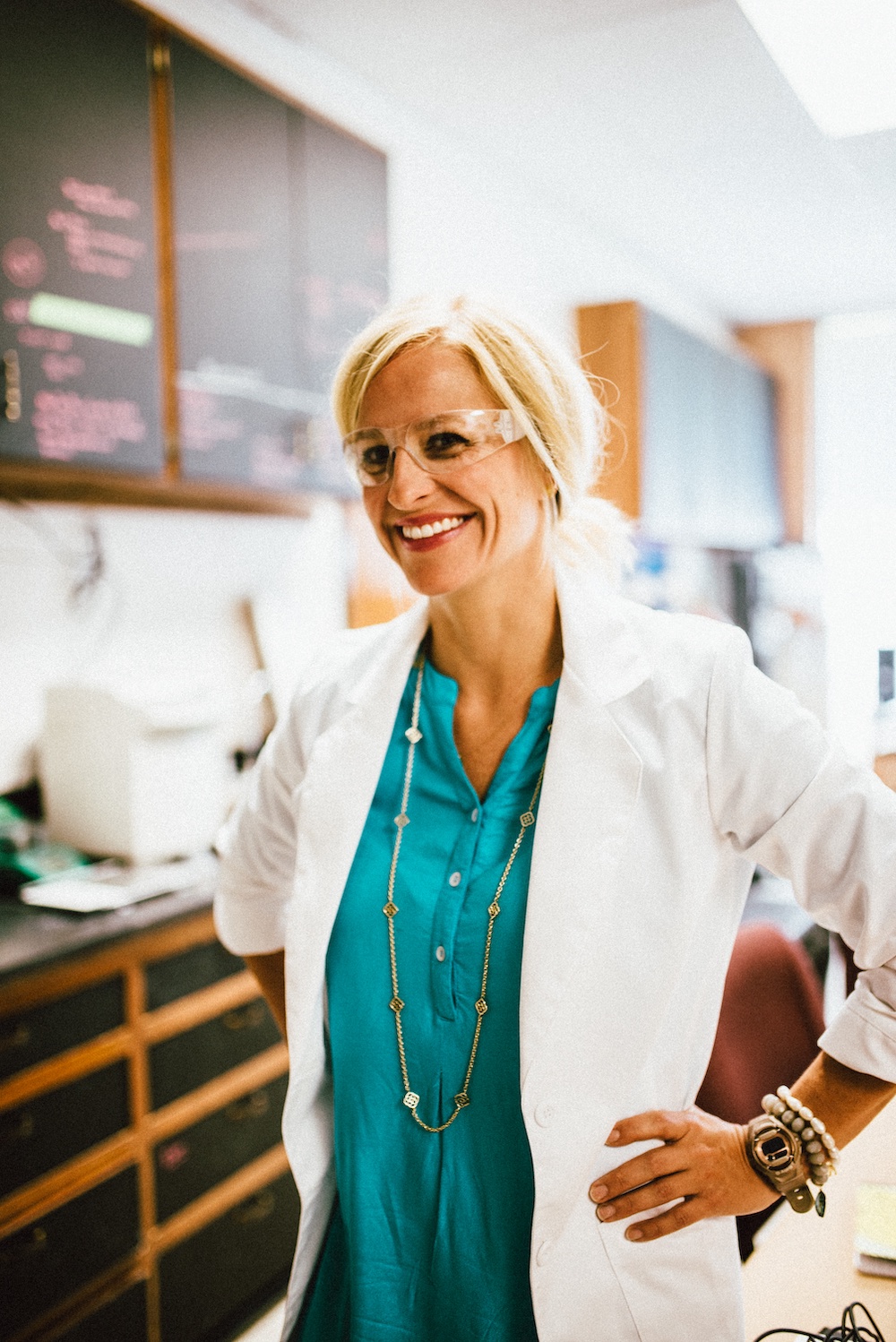 Tell us about your background.
Tell us about your background.
Dr. Hunt: I grew up here in Canyon and attended Canyon High School. When I graduated from high school, I knew I wanted to do something with math and science. Those subjects were my favorite, really math. My dad had worked at Pantex for years. He worked with a lot of engineers and he suggested that I try engineering. At that time, WT did not have an engineering program but I went to Texas Tech, the closest engineering program.
While in my third year at Tech, we got our first female engineering professor, Dr. Michelle Pantoya. I took her heat transfer class and I remember falling in love with both the class and the way she taught it — it was relevant. I had taken all these classes about machinery, classes that I knew were important for mechanical engineering, but were not all that interesting to me. The class was about energy, it was about using it from an engineering perspective, using resources to create what we need, and I loved it.
Michelle talked to me about graduate school. She said, “What do you think about studying for your master’s degree and then eventually a Ph.d.?” I had interviewed for jobs all over, and I remember calling my dad to say, “Dad, can I please go to graduate school?” That is how I got into academia.
At that time, it was the early 2000s; nanotechnology was really taking off and Michelle was on the forefront of the movement with all of the major agencies- Department of Energy, Department of Defense, National Science Foundation. She had this research funding coming. It was a really exciting time. When we started, we were some of the very first to characterize nano-energetic materials. Essentially, we were working on creating new materials and that is how I got into research and development.
When I was finishing my Ph.d. program, my mom sent me an article from the paper saying that WT was starting an engineering program and so I came back. I was excited to come back. I was married at the time and my husband said, “Are we really moving back to your hometown?” I said, “Oh, just wait…you are going to love it.” That is how I returned to this area, home.
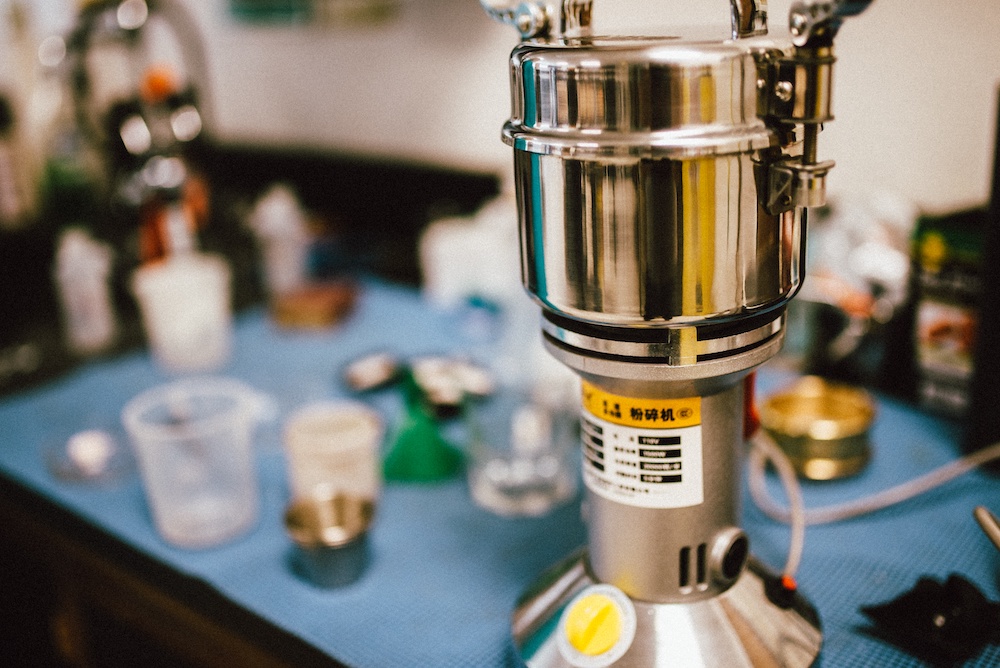 What led you to the field of mechanical engineering?
What led you to the field of mechanical engineering?
Dr. Hunt: My dad suggested I consider engineering so I read about the different types of engineering. I looked at chemical and environmental engineering; but at that time, those programs were a bit more obscure. Then, I really settled on biomedical. I thought I would love it.
What they say about females in engineering is that they do not always stay. One, the curriculum is not very relevant to females. Two, females need to see that connection — how is what I am doing making a difference?
That was true for me; it was why I thought I would do biomedical engineering. I remember meeting with the department head for mechanical engineering when I attended new student orientation at Tech. I mentioned biomedical engineering, but he recommended that I do mechanical for my undergraduate work because it is so broad; and then later, if I went to graduate school, I could go into more specific field.
Can you provide some background on your personal achievements, especially regarding the research you have done?
Dr. Hunt: At the time, my research group and I were working with nanomaterials. It was new; it was exciting. Materials science has been around for thousands of years; people have been looking at how to use materials in the best possible way, different materials that they have mined from the earth, for years. So, materials science has become an older science.
What happened, given the opportunity to create nanomaterials, to work with materials on the nano-scale, was that all of the properties change. Materials that are strong regularly, might not be on the nano-scale. Materials that have good conductivity or heat properties, qualities we look for in materials; when you go down to the nano-scale, things are different. It was like the invention of a new field of materials science. For a researcher and engineer, it was fascinating.
I have been working with nanomaterials for the last several years. The project I have been working on, we are creating a new material. The project was originally funded by the Department of Defense, the Defense Threat Reduction Agency, to combat weapons of mass destruction. Essentially, we were making solid materials and gaseous materials to be able to neutralize a biological weapons manufacturing facility or something similar. It was a counter weapon. However, we began to see that we were creating these materials that resist these microorganisms; and so we began looking at how could we use this material commercially.
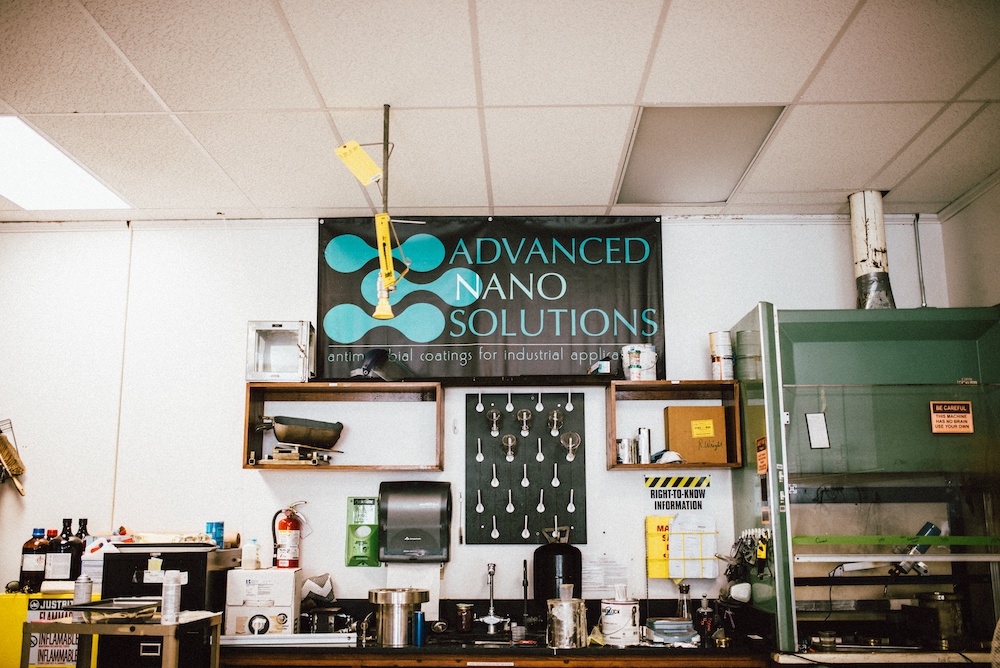 We have a start-up company, Advanced Nano Solutions, and we are creating materials for use in the food preparation industry, and with clean-water applications.
We have a start-up company, Advanced Nano Solutions, and we are creating materials for use in the food preparation industry, and with clean-water applications.
Probably our most successful product is a material that is anti-corrosive. Corrosion is a big deal because it causes structural failure, and you cannot prevent it completely though we try to mitigate it. Corrosion is caused by interaction with the environment, because microorganisms that live in soil and water attach to metal and eat away at it. Our material prevents that; it protects a material from that kind of corrosion. We are working right now with several different companies; and we have worked on some cool projects.
Where did you receive funding for your research and Advanced Nano Solutions?
Dr. Hunt: We commercialized through the Texas A&M system and through that, a man named Kelly Jones has created a fund called the Aggie Venture fund. I remember meeting Kelly in Dallas and he said, “You know, I’ve heard about your material. What do you think about commercializing it?”
For an engineer in research and development, commercializing is not really what we do. It is scary because I am so used to being able to control everything in a lab environment, to run tests over and over and over again, but he has helped me think about the bigger picture. How can we make this practical? How can we use this to help people?
We started a year ago, and it has been amazing. We are working with some oil companies in the Middle East, looking at coding different pipelines; because pipes corrode quickly. It is a new world for me. I have learned so much in the last year. It has been a life-changing experience, because I have always thought so lab-based.
What are you working on right now that excites you?
Dr. Hunt: Our newest projects are the clean water projects. We are developing filters that are different from typical filters. You see filters that you can take camping that filter the water, they work well; but they are filtering large particles, large bacteria and then they are holding them in the filter.
When we use our material, bacteria is completely neutralized; they cannot reproduce and are, in effect, gone. We can say it is completely clean water. The water comes out and it is not just that it has small microbes or that it get rids of a few things; we are seeing it eliminate any kind of fungi, bacteria or spore forming bacteria that make you sick. This matters because if the military is using it in a different country where there is a risk of a biological attack or warfare- it can be neutralized.
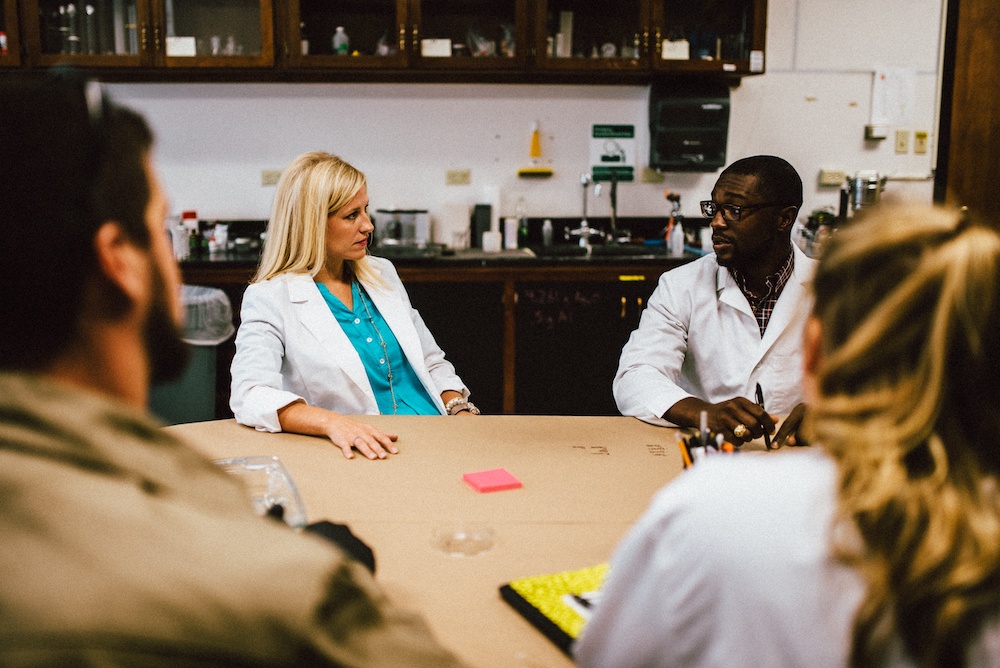 Our plan is to eventually work with desalination, helping to protect desalination systems. There are many countries, specifically small countries in the Middle East, where the only water supply is through desalination. They have these big plants that are really vulnerable to any kind of attack. If we can somehow incorporate this material where it could at least reduce the risk of an external microbe biological attack; they could have a little bit more security for their water supply. Those are big ideas that we want to move towards in the future, and I feel confident that we will.
Our plan is to eventually work with desalination, helping to protect desalination systems. There are many countries, specifically small countries in the Middle East, where the only water supply is through desalination. They have these big plants that are really vulnerable to any kind of attack. If we can somehow incorporate this material where it could at least reduce the risk of an external microbe biological attack; they could have a little bit more security for their water supply. Those are big ideas that we want to move towards in the future, and I feel confident that we will.
In your life, as a mother, professor and researcher, how do you find balance and how important has it been to have an example of other working women creating balance?
Dr. Hunt: My mom worked; she was a hard worker. At the time, I did not really understand that. I remember having friends with moms at home. They were so available and I remember feeling like my mom was always at work.
She worked at Amarillo National Bank. She ran downtown operations until the Georgia branch opened. Then she ran the Georgia branch for years when I was growing up.
I had a really good example of a mom who worked. Both my parents worked, and I am so appreciative of that. My mom worked and she took care of us. Now that I am older, I realize the kind of sacrifices she made. It is not easy, so I am very thankful for her.
I think it was really important for me having a mom and dad that worked. I was really close to my dad and he really believed I could do something that would matter. From the time I was little bitty, he was my biggest fan. As I said before, he worked and Pantex but he also worked at Amarillo National Bank. And he went to college when we were kids. I even remember him taking us with him to his night classes sometimes when my mom had to work. I remember him graduating; it was a huge deal for our family. He always wanted that for us; he always encouraged us and believed in us. So I did not ever think that I would not work, and in some kind of technical field.
I feel very fortunate that my husband also had a very very hard-working mom. We met and got married during undergrad, and he also encouraged me to work — “We can do this, we can have a family and we can work, too.”
With Michelle Pantoya, it was critical for me to have someone who was doing what I was going to be doing in my field- to see her work-life balance.
What I saw, too, was that it is ok to make it work on your own terms. I think so often females go into a career — they have a family, they are working with males, and then you feel the need to make the way you do things look the same way they do them.
There is a standard to measure up to — how you work and when you work needs to look the same as everyone else. I do not think that is true. I think it is about productivity. It is about what is the goal, what is the job, what is the problem we are trying to solve; then, you find a way on your own terms, on your own schedule, to get it done when it needs to be done.
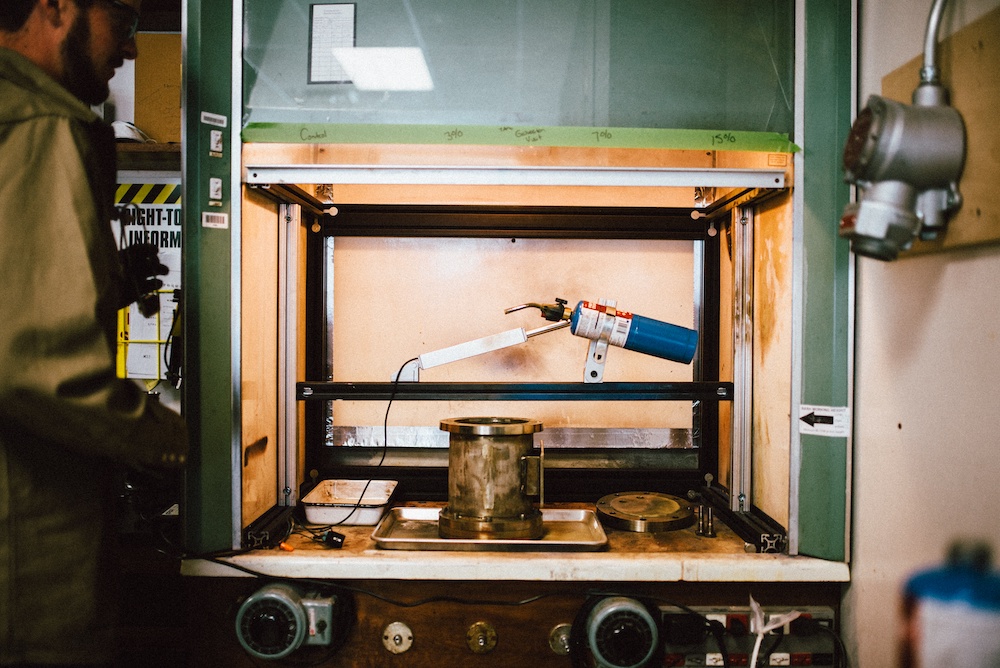 Giving yourself flexibility is so important. I know every job does not allow for that, but I think we could achieve more successful balance if we did allow for more flexibility. I am thankful to be in academia because I have that.
Giving yourself flexibility is so important. I know every job does not allow for that, but I think we could achieve more successful balance if we did allow for more flexibility. I am thankful to be in academia because I have that.
It is not always easy. There are days when I am doing so much; I am maybe not doing everything well. Then there are days when I feel like what we are doing, this work will matter for people. My kids will see that they can have an idea and they can pursue it and I think that is really important. I am grateful to get to work because I feel like it matters.
From your perspective, what is the most important purpose of education in our society?
Dr. Hunt: I think what we, as WTAMU, would say first that we are teaching them critical thinking and problem solving. It is not necessarily about teaching all of the technical information because once they learn to think critically, they can find that information when they need it.
I also think we are giving them a period of maturity. We are giving them this four or five years to mature and to be ready to enter the workforce. As an engineer, because engineers are responsible for the health and welfare of the public, I think there needs to be that growth period, and it happens while in school.
The university’s mission, too, is to give students a global perspective, a broader way of thinking. We try to do that in engineering as well. We try to show them that it is not just about a job or getting out to make money; it is about being the leaders technically for our region. I think the last statistic was 86% of our graduates stay and work as engineers in the Amarillo area, so we are really developing that part of our workforce. We are producing the engineers for this area. That is a huge responsibility. That is who our students will be.
Want To Learn More About Dr. Emily Hunt And Her Work?
Visit advancednanosolutions.com to learn more about Dr. Hunt’s research and her company.
Photos courtesy of Kaili Herr Photography
